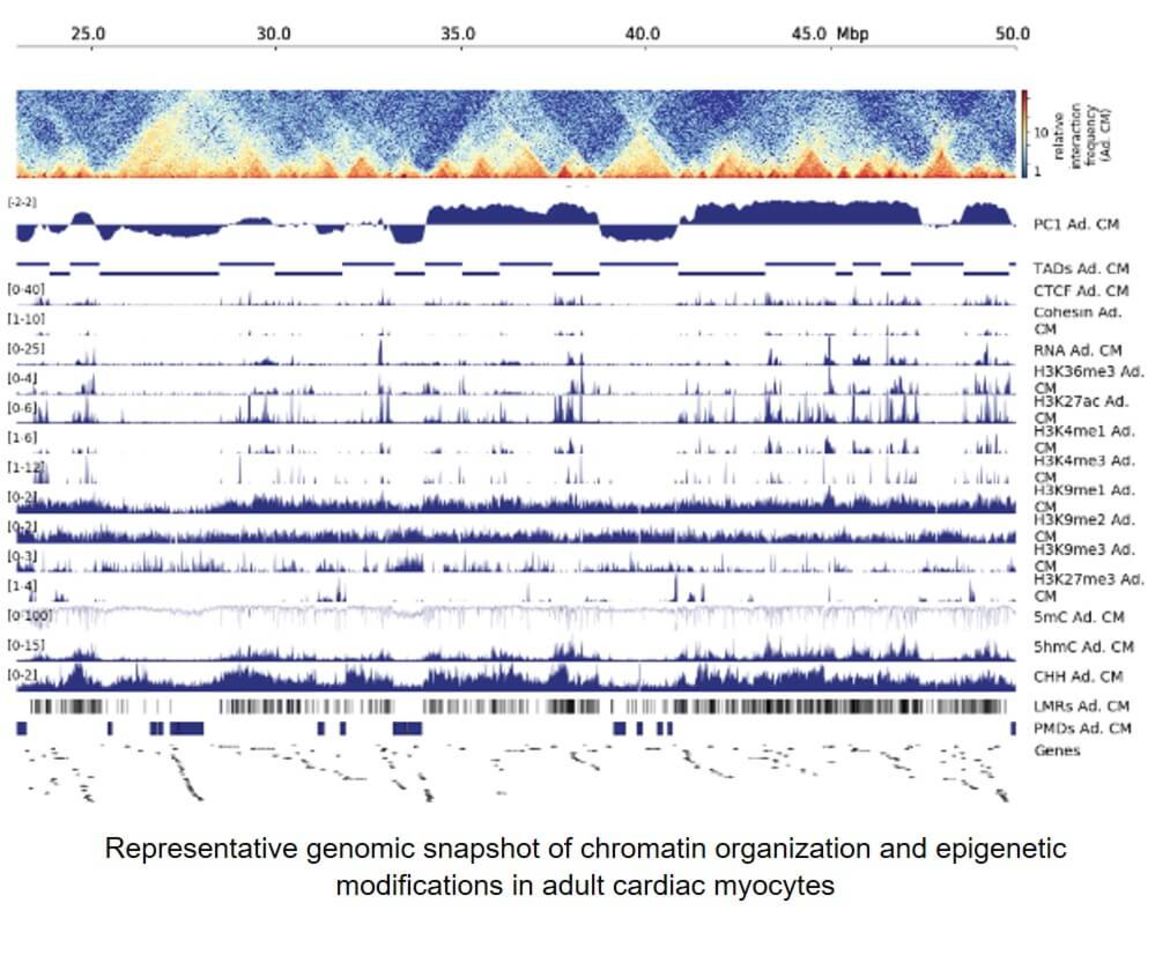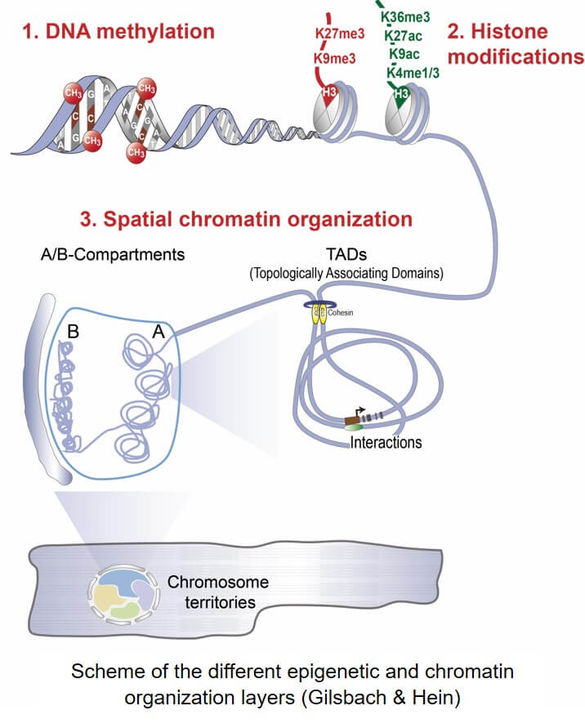Gene Regulation in Cardiac Disease (Gilsbach)
Background
The heart is a highly specialized organ consisting of different cell-types, including cardiac myocytes, fibroblasts and endothelial cells. Physiological requirements, signaling molecules and heterocellular interactions regulate the function of these cells under normal and disease conditions.
Epigenetic mechanisms are essential to coordinate the underlying cell type-specific gene expression programs. Our studies show, that gene regulation in development and disease involves different layers of epigenetic mechanisms. DNA methylation and histone modifications are key factors regulating the accessibility of DNA for binding proteins. This includes transcription factors as well as the RNA polymerase. The three-dimensional organization of the genome enables interaction between distal transcription factor binding sites (enhancers) and gene promoters. These enhancer-promoter contacts are the most specific regulatory mechanisms of the genome and are likely the basis for cell-type diversity in metazoans. However, the relevance of individual chromatin contacts for transcriptional control in development and disease is largely unknown. A major question of our research is, whether perturbation of chromatin contacts allows modulating cellular programs implicated in heart disease.
Methods
To resolve the different layers of chromatin biology in cardiac cell types we apply state of the art molecular biology, epigenetic and cell sorting techniques in combination with massive parallel sequencing. Computational methods are a central part of our research, since they translate the generated sequencing data into genome-wide high-resolution maps. Combining multiple layers of epigenetic information, including histone modifications, DNA methylation, chromatin organization and gene expression, allows us to identify potential regulatory elements in development, health and disease of cardiac cells. To prove the functional relevance of annotated regulatory regions we combine CRISPR-based functional genomics with single cell technology.
Aim
This approach will enable us to identify and modulate epigenetic mechanisms regulating cardiac functions.


